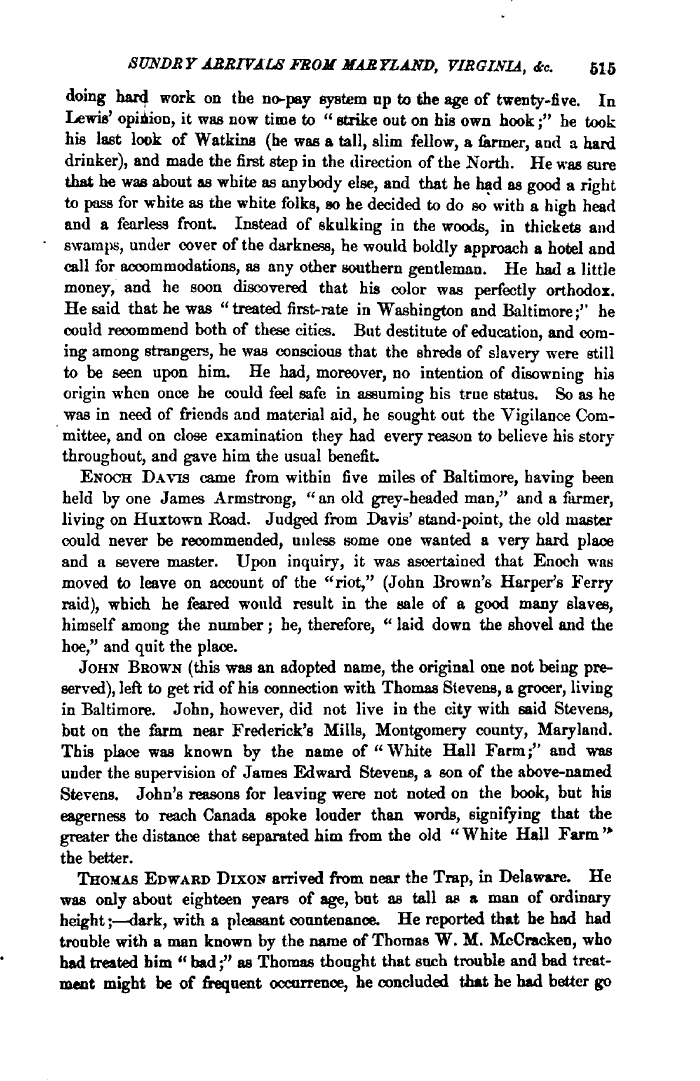 |
||||
 |
||||
| SVNDRY ARRIVALS FROM MARYLAND, VIRGINIA, dee. 515 doing hard work on the no-pay system np to the age of twenty-five. In Lewis' opinion, it was now time to " strike out on his own hook;" he took his last look of Watkina (he was a tall, slim fellow, a farmer, and a hard drinker), and made the first step in the direction of the North. He was sure that he was about as white as anybody else, and that he had as good a right to pass for white as the white folks, so he decided to do so with a high head and a fearless front Instead of skulking in the woods, in thickets and swamps, under cover of the darkness, he would boldly approach a hotel and call for accommodations, as any other southern gentleman. He had a little money, and he soon discovered that his color was perfectly orthodox. He said that he was " treated first-rate in Washington and Baltimore;" he could recommend both of these cities. But destitute of education, and coming among strangers, he was conscious that the shreds of slavery were still to be seen upon him. He had, moreover, no intention of disowning his origin when once he could feel safe in assuming bis true status. So as he was in need of friends and material aid, he sought out the Vigilance Committee, and on close examination they had every reason to believe his story throughout, and gave him the usual benefit. ENOCH DA via came from within five miles of Baltimore, having been held by one James Armstrong, " an old grey-headed man," and a farmer, living on Huxtown Road. Judged from Davis' stand-point, the old master could never be recommended, unless some one wanted a very hard place and a severe master. Upon inquiry, it was ascertained that Enoch was moved to leave on account of the "riot," (John Brown's Harper's Ferry raid), which he feared would result in the sale of a good many slaves, himself among the number; he, therefore, " laid down the shovel and the hoe," and quit the place. JOHN BROWN (this was an adopted name, the original one not being preserved), left to get rid of his connection with Thomas Stevens, a grocer, living in Baltimore. John, however, did not live in the city with said Stevens, but on the farm near Frederick's Mills, Montgomery county, Maryland. This place was known by the name of "White Hall Farm;" and was under the supervision of James Edward Stevens, a son of the above-named Stevens. John's reasons for leaving were not noted on the book, but his eagerness to reach Canada spoke loader than words, signifying that the greater the distance that separated him from the old "White Hall Farm'» the better. THOMAS EDWARD DIXON arrived from near the Trap, in Delaware. He •was only about eighteen years of age, but ae tall as a man of ordinary height;—dark, with a pleasant countenance. He reported that be had had trouble with a man known by the name of Thomas W. M. McCracken, who had treated bim " bad," as Thomas thought that such trouble and bad treatment might be of frequent occurrence, be concluded that be bad better go |